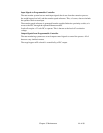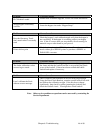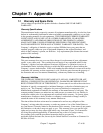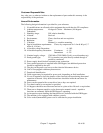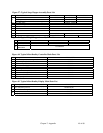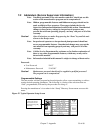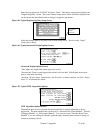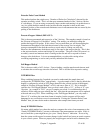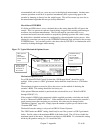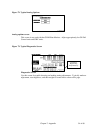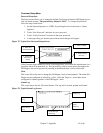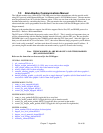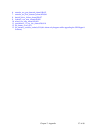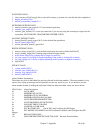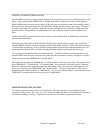Chapter 7: Appendix 52 of 60
Extruder Pulse Count Method
This method updates the weight every “Number of Pulses for Calculation” detected by the
extruder proximity switch. This is not the most automated method of the 3 choices, but has
it’s advantages. If you are using an unusually large extruder and running it in production at a
very low speed then this method works best because the snapshot is taken at the same
rotational position of the extruder and eliminates errors in measurement that are caused by the
pulsing of the feed throat.
Percent of hopper Method (DEFAULT)
This is the most automated and responsive of the 3 choices. The snapshot sample is based on
the “Percent of Hopper for Calculation” setting. The smaller you make this setting the
quicker the hopper will update. If this value is set too small then you will be measuring the
instantaneous throughput of the feed throat instead of the average loss-in-weight. The
average consumption at the feed throat always equals what is coming out at the die.
However, the instantaneous feed throat usage is not equal to the usage at the die. This is due
to the pressure barrier sections and design of your extruder. The goal of the GH system is to
accurately control and measure what is coming out the die and not to respond to nuance
changes at the feed throat. It is not recommended that you reduce this setting unless
consulting engineering or service and you fully understand this feature.
Full Hopper Method
This is the most stable of all 3 choices. Upon reloading a weight snapshot and time are used
to calculate the overall usage since the last reload. This is also the least responsive setting.
WTP/RPM Filter
When switching between the 3 methods you need to understand the sample time and
configure the “WTP/RPM Filter” appropriately. A good example of this is that by default the
hopper is configured to reload at 50% (keeps material in the vertical section of the hopper),
sample in “Percent of Hopper Method” at 20%, and uses a filter of “9”. If it is desired to
switch to the “Full Hopper Method” then you don’t need a filter of “9”. A filter of “9” uses
10 points. At a sample of “20%” you get 2 samples per reload. It would therefore take 5
reloads to fill the analyzer upon starting the line. After that the measurement will be updated
with each and every 20%. When switching to the “Full Hopper Method” you only need a
filter of “4” to achieve the same time frame of samples, but the response will be much
dampened to any oscillation or error in measurement. If using the “Extruder Pulse Count
Method” then you must do the math to determine what sample time frame you need.
Steady WTP/RPM Window
No matter which method you chose the analyzer compares the series of measurements to the
“Steady WTP/RPM Window” percent to determine if the measurements are stable. If this is
set too small the system might never give you a “Steady Process” indication. If set too big
then the system could respond to nuance changes in the loadcell and cause an erratic response
in your control system. When set properly the weigh hopper can be hit with a hammer (not



